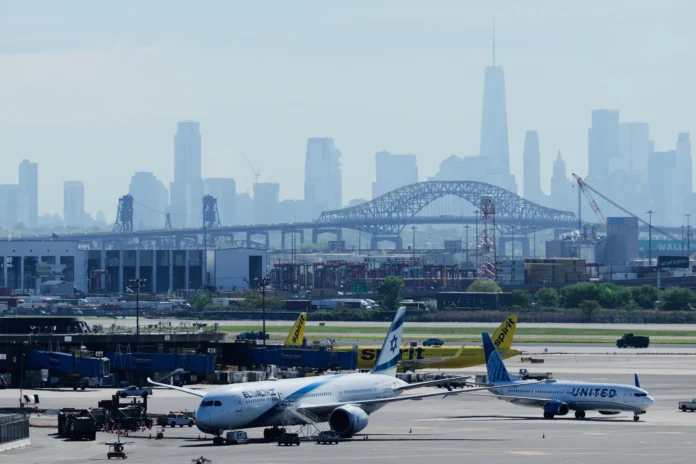As one of the busiest travel hubs in the Northeast, Newark Liberty International Airport is undergoing a major operational transformation in 2025. A blend of long-overdue infrastructure upgrades, technology challenges, and staffing hurdles has pushed the airport into a period of disruption — but also renewal.
At the heart of the change is the long-awaited reopening of Runway 4L-22R, one of the airport’s most critical assets. While this is a step forward for efficiency, Newark’s skies will remain tightly controlled due to continued air traffic limitations and technological hurdles. Here’s a closer look at what’s happening on the ground and in the air.
Runway 4L-22R Reopens Ahead of Schedule
After months of construction and temporary shutdowns, Runway 4L-22R is set to reopen on June 2, 2025, nearly two weeks earlier than expected. The runway had been under a $121 million renovation project since early March, with full 24/7 closures beginning in mid-April. The accelerated reopening is welcome news for travelers and airlines, who have faced increased delays and longer taxi times due to limited runway availability.
This key runway handles a significant portion of both arrivals and departures, and its return to service is expected to relieve some pressure — but not all.
Flight Limits Remain in Place Through October
In an effort to mitigate congestion and maintain safety, the Federal Aviation Administration (FAA) has temporarily capped arrivals and departures at Newark to 28 flights per hour through October 25, 2025. These limits are designed to help manage air traffic more efficiently while ongoing issues with radar equipment, communication systems, and air traffic controller staffing continue to be addressed.
For passengers, this means continued delays are possible, especially during peak hours. Travelers are advised to check with airlines ahead of time and allow for extra flexibility in their schedules.
Equipment Failures Add to Challenges
Newark Liberty has also been grappling with technical issues that go beyond the runways. Multiple equipment outages—including radar and communications systems failures—have hampered operations, causing additional delays and forcing ground crews and controllers to work under high stress.
These equipment challenges underscore the growing need for resilient, modern airport infrastructure — and serve as a wake-up call for more significant technological investment across the country’s aging aviation systems.
Air Traffic Control Under Pressure
Perhaps one of the most pressing concerns at Newark is a shortage of qualified air traffic controllers. Staffing issues have been building for years, but the current surge in post-pandemic travel is pushing the system to its limits. Controllers are tasked with managing thousands of flights weekly through one of the busiest air corridors in the U.S., all while dealing with outdated systems and increasing demand.
Until staffing levels improve and systems are modernized, Newark is likely to experience continued delays and capped operations.
A Bright Spot: Terminal A Sets a New Standard
Despite these challenges, Newark is also showcasing its ability to evolve. The newly constructed Terminal A, completed in 2023, has been widely praised as one of the best new airport terminals in the world. Offering a sleek design, improved passenger flow, advanced security technology, and a wide array of food and retail options, it’s a symbol of what Newark’s future could look like when infrastructure and innovation align.
For many travelers, Terminal A has become the most pleasant part of their journey—an important reminder that upgrades do make a difference.
The Bigger Picture for New Jersey
The operational changes at Newark Liberty reflect a broader trend across New Jersey: the intersection of infrastructure, technology, and innovation. As more state and local governments embrace modernization, airports like Newark become crucial testing grounds for how smart, digital-first strategies can improve daily life for millions of people.
To explore more stories on how technology and business are transforming New Jersey, visit our dedicated section here:
👉 Explore Technology & Business in NJ
Final Thoughts
As Newark Liberty International Airport navigates a complex web of improvements and challenges, travelers are witnessing a pivotal chapter in the airport’s evolution. While the return of a major runway is a step in the right direction, operational constraints and infrastructure issues are far from resolved.
Yet amid the turbulence, there is optimism. With continued investment, innovation, and leadership, Newark has the potential to become not just a gateway to New Jersey—but a national model for the next generation of smart, resilient airports.











